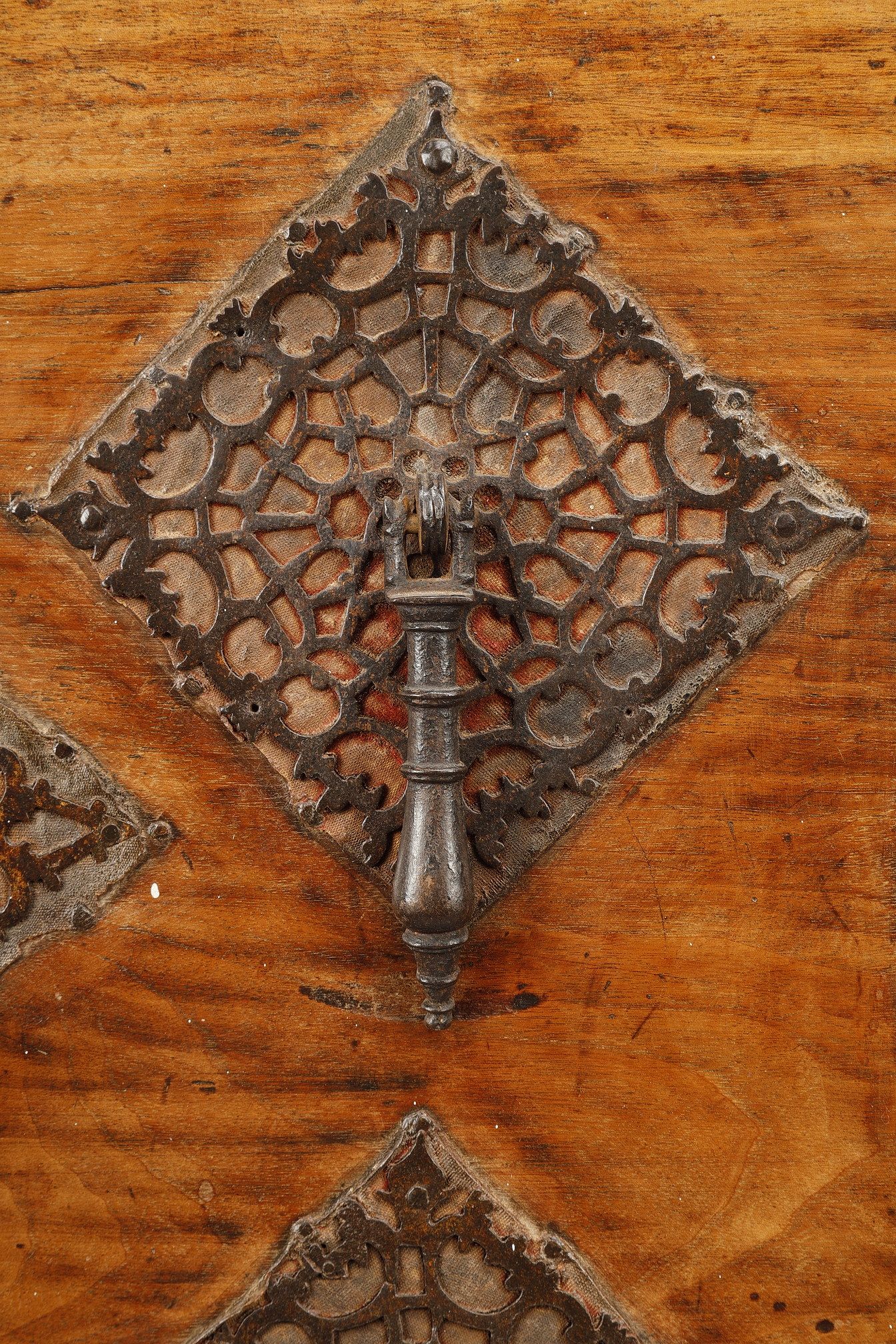The Bargueño, a 17th-century Spanish cabinet
15.06.22
A Bargueño is a type of Spanish writing cabinet (" escritorio ") that appeared in the early 15th century. However, the term was not coined until 1872 by Spanish art historian Juan Facundo Riaño. It refers to the small town of Bargas, near Toledo, where marquetry was produced in the 16th and 17th centuries. This piece of furniture is composed of a chest, the Bargueño, generally set on a base that can be an arched table (" pie de puente ") or a chest of drawers ("taquillon"). taquillon ") like the one in our collection. The chest opens through a locked flap to reveal a multiplicity of drawers, many of which are secret.
This cabinet, primarily utilitarian in nature, features a very sober decor with rigid, square lines. Panels of oak, walnut or chestnut emphasize the object's strength and imposing character. Its simple shape and side handles make it easy to transport. Until the middle of the 18th century, furniture items followed their owners to their various homes. Furniture had to be able to withstand long journeys. This characteristic made it the furniture of choice for conquistadors and missionaries exploring the "New World". Since it could hold administrative, diplomatic and personal effects, the Spanish made it an essential part of their voyages to America.

Heavy hinges and wrought-iron latches inspired by Near Eastern craftsmanship add to this massive look. They are in the Mudejar style, influenced by the Islamic civilization present in Spain until the fall of Granada in 1492. These repetitive decorations are set in geometric shapes. Elements of red velvet or textiles are sometimes present, but may have disappeared over time due to their fragility. These decorative elements are so highly prized that it is now possible to find this ironwork sold separately on the art market. Some locks were even dismantled from their original furniture to satisfy the tastes of 19th-century collectors. Our Bargueño retains its rich double hasp lock in the shape of towers and pomegranates, a representation of the wealthy Spanish homes that might have housed such a piece of furniture.
Originally a piece of sacristy furniture used to house objects of worship (vestments, liturgical vases or cups), the Bargueño retains a trace of this use in the symbolism of its decorations. The shell-shaped pulls are a reminder of the portable chests used by pilgrims to Santiago de Compostela, while the pomegranate is a symbol of fertility, but above all of Christ's resurrection. Although no longer strictly speaking a piece of religious furniture, it retains a mystical dimension thanks to its hidden compartments.
Attaining its greatest success in the Baroque period, it plays on a taste for dramatization with a desire to surprise the spectator. In fact, behind a rustic façade lies a sophisticated Italian-influenced décor designed by architect Juan de Herera. Symmetrically organized, the hidden drawers and compartments use the architectural vocabulary of temples, with colonnades and arched pediments. The wood and bone marquetry is increasingly fine and detailed, highlighting the skills and techniques of the cabinetmakers. The owner is able to impress his audience not only by unveiling the various compartments, but also by displaying his collections of curiosities.
At the end of the 17th century, the Bargueño lost its travel function to become a prestigious piece of furniture found in all the great Spanish homes. Faced with the Italian and German cabinets then dominating the European market, it lost its flap and became a cabinet with simple decorative and storage functions for collections of precious objects.





